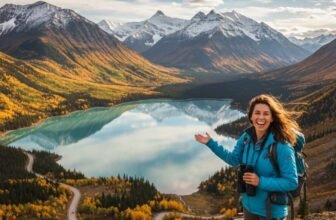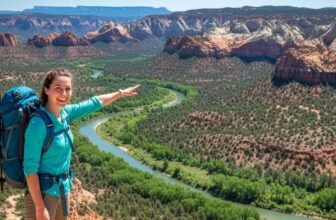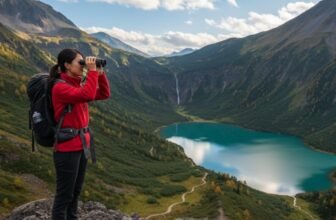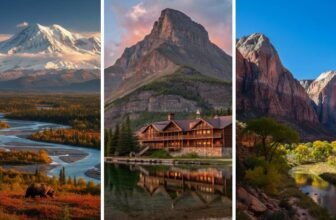
Some towns just stay with you — not because they’re the biggest or flashiest, but because something about them feels right down to the bones.
After months of backroads, local diners, and the kind of sunsets that make you pull over just to breathe it in, a few places stood out as more than just travel stops — they felt like home, waiting quietly for the right person to notice.
From mountain air to ocean breeze, these are the small towns that made me stop searching and start daydreaming about moving in tomorrow. Each one earns its spot — effortlessly.
1. Bend, Oregon
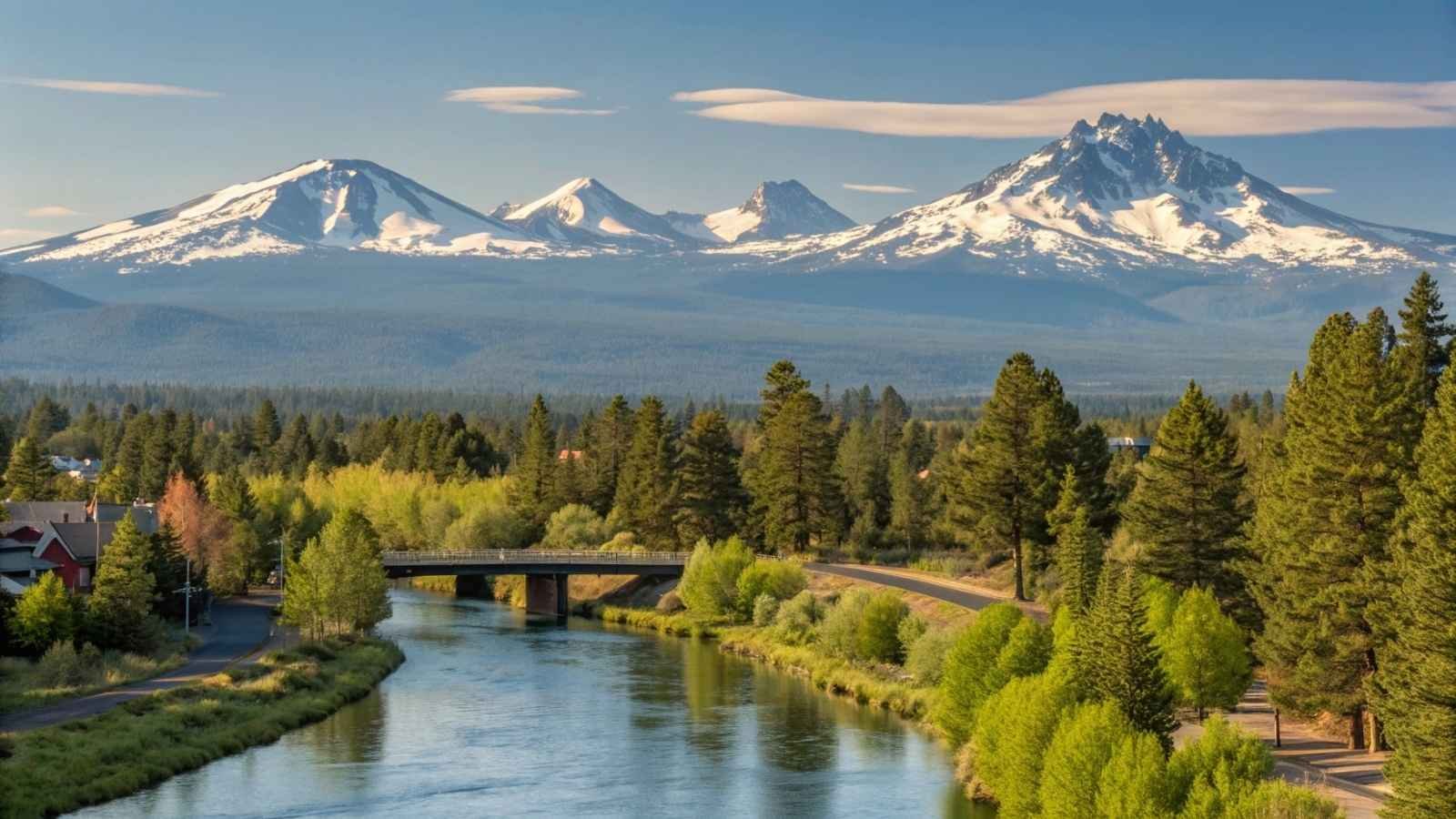
Bend feels like the rare small city that actually has everything you want without feeling like you live in a mall. There’s a strong outdoor culture — trails, river access, mountain biking — but also a surprising number of independent restaurants, craft breweries, and cultural events that keep the rhythm varied. That combination makes Bend feel lively and settled at the same time.
The town’s growth has brought better services and a thoughtful streak in planning: bike lanes, parks, and a downtown that still walks well on foot. For people who love weekend adventures, it’s a dream; for people who want solid local amenities (good medical care, co-working, arts), Bend delivers better than most places its size. Quality of life here skews active and outdoorsy, but with surprisingly strong cultural bones.
A small memory: on a rainy afternoon the local library had a community talk about river restoration — it felt like a place where practical stewardship and lifestyle actually meet. If you’re moving for balance — outdoor access plus a functional small-city infrastructure — Bend is near the top for good reason.
- Best months to visit: June–September (dry, warm; ideal for trails and river sports).
- Climate: High desert — warm summers, cold winters with snow at higher elevations.
- Population (approx.): ~100k (small city vibes).
- Nearest major airport: Redmond (RDM) ~30–35 minutes.
- Housing note: Competitive market; prices higher than many small towns due to demand.
- Top draws: Mountain biking, Deschutes River, craft beer scene, outdoor events.
- Consider if: You want outdoor access plus modern amenities; not ideal if you want very quiet, slow pace.
2. Beaufort, North Carolina
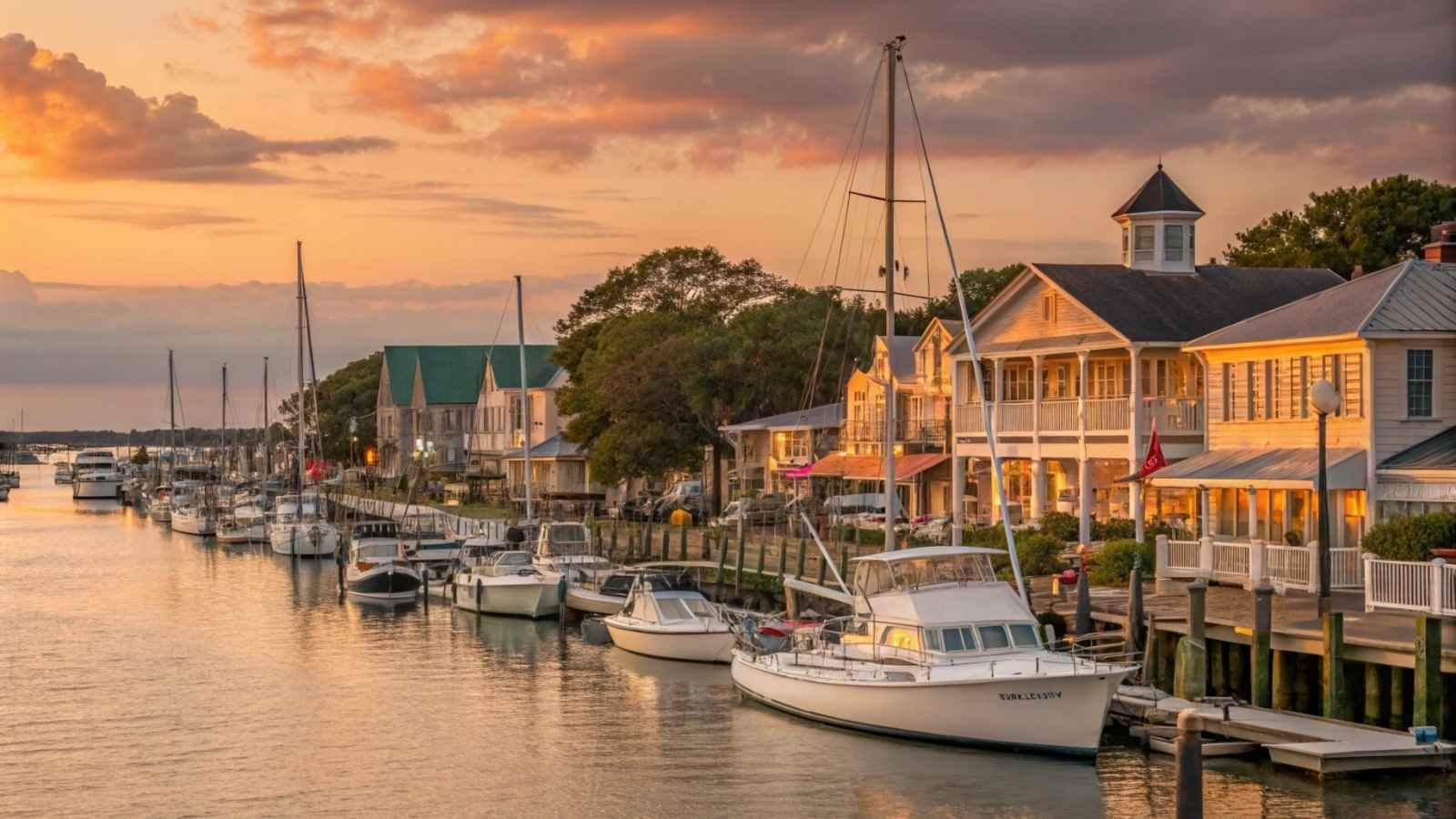
Beaufort is classic coastal charm without the cruise-ship crowds — oak-lined streets, a working harbor, and a calming coastal rhythm. The town manages to balance tourism with local life: summers have visitors, but the year-round community maintains the character that draws people in. Coastal living here is more about a relaxed daily tempo than nonstop activity.
Fishing, boating, and seafood culture are woven into town life, but there’s also a decent selection of local shops, a few excellent cafes, and seasonal festivals that keep the calendar friendly. The historic architecture and waterfront parks give Beaufort a postcard feel, but it’s that steady local routine — fishermen, artists, cafés — that makes it feel move-in ready rather than just picturesque.
I recall a morning stroll along the waterfront where a crab boat unloaded and a neighbor waved from a bench; it felt like the kind of town where daily life is both visible and warm. If coastal living with a genuine small-town pulse is your aim, Beaufort is a quietly persuasive pick.
- Best months to visit: March–May and October–November (mild weather, fewer tourists).
- Climate: Humid subtropical — hot summers, mild winters, hurricane season risk in late summer/fall.
- Population (approx.): Small — a few thousand in town; larger surrounding county.
- Nearest major airport: New Bern (EWN) ~45–60 minutes; Raleigh-Durham ~2.5 hours.
- Housing note: More affordable than many coastal towns, but waterfront properties are premium.
- Top draws: Maritime culture, seafood, quiet waterfront living, historic district.
- Consider if: You want a true coastal lifestyle and accept some seasonal weather risk.
3. Stowe, Vermont
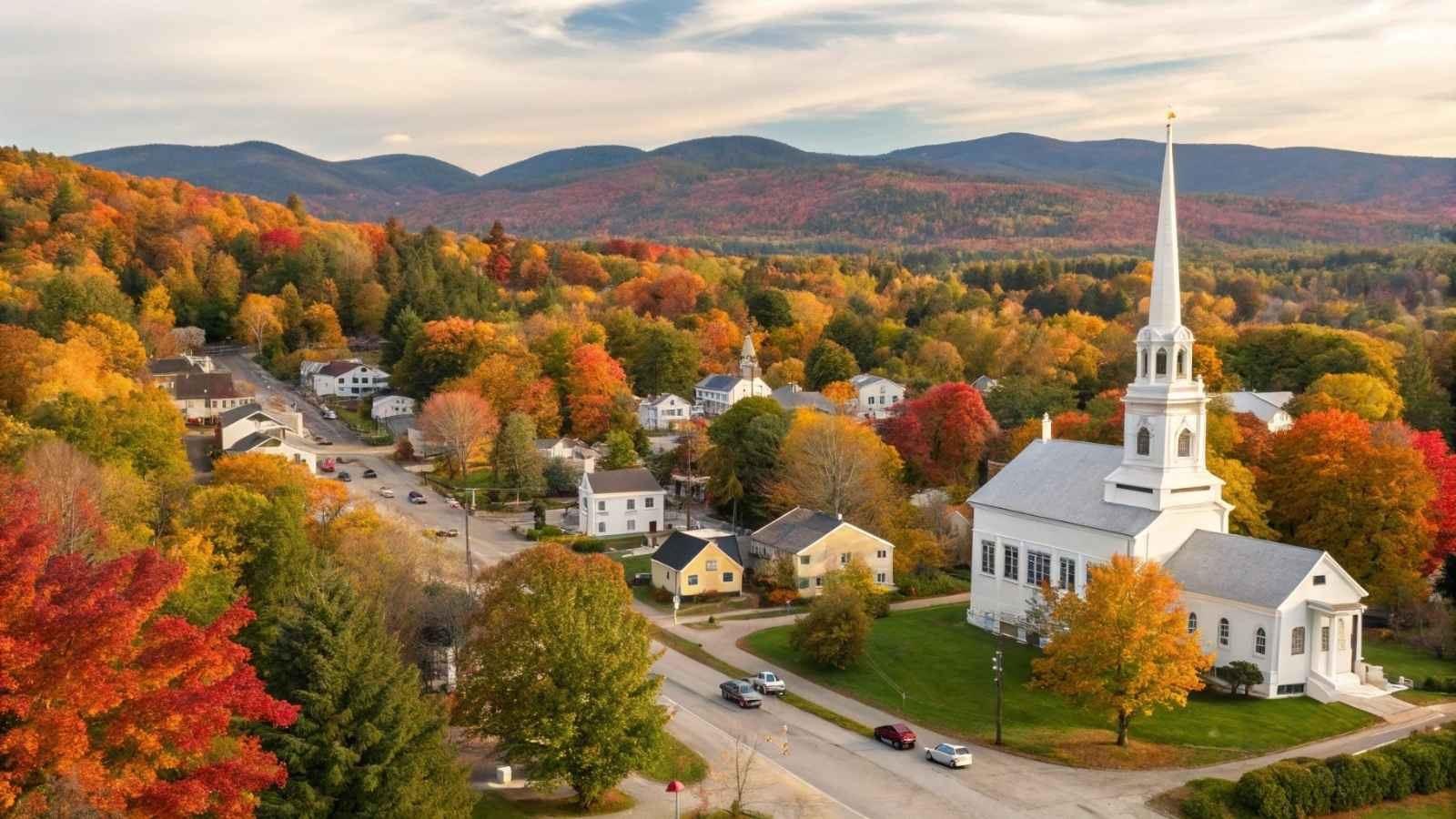
Stowe is the kind of place where seasons are dramatic and embraced: fall color is a local religion, winter brings reliable snow and a ski-town culture, and summer offers cool mountain trails. The village has a refined, classic New England feel — stone buildings, covered bridges nearby, and a small but lively downtown built around outdoor recreation and hospitality. If seasonal contrast and scenic mountain life matter to you, Stowe delivers richly.
Beyond skiing and leaf-peeping, Stowe has a surprisingly deep food and lodging scene for its size, plus artisans and community arts programs that keep the town culturally rich after the lifts close. The community tends to be engaged in conservation and outdoor education, and that shows in preserved land and trail networks that feel well-loved and well-maintained.
A quick scene I remember: a local bakery handing out leftover muffins to a group of kids after school — small kindnesses that add up. If you’re drawn to mountain living with a cultured small-town center and active seasons, Stowe often checks all the boxes.
- Best months to visit: December–March (skiing) and September–October (fall foliage).
- Climate: Humid continental — cold winters with snow; mild summers.
- Population (approx.): A few thousand in town; regional population higher.
- Nearest major airport: Burlington (BTV) ~45–60 minutes.
- Housing note: Seasonal demand pushes prices up; ski-area homes command premiums.
- Top draws: Skiing, hiking, fall foliage, New England village charm.
- Consider if: You love strong seasons and winter sports; winters are long and cold.
4. Bozeman, Montana
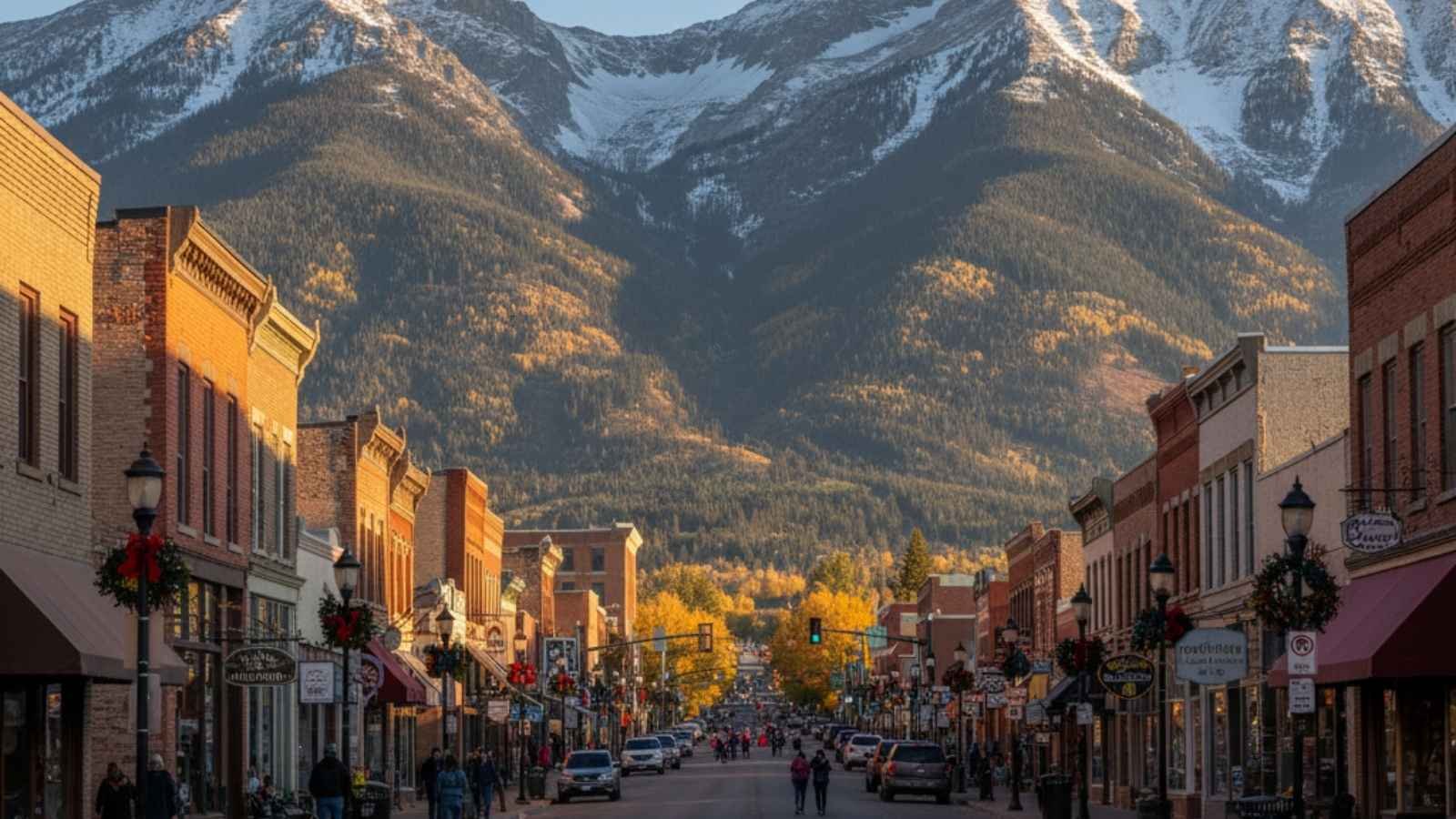
Bozeman blends a frontier spirit with a surprisingly modern civic life: good restaurants, a university vibe (Montana State University), and easy access to some of the best outdoor areas in the Rockies. It’s both a gateway to wild places and a small city with real services — hospitals, arts, and a growing tech/research presence. That mix makes Bozeman magnetic for people who want wilderness access without sacrificing basic urban conveniences.
Outdoor options are almost embarrassingly plentiful: hiking, skiing, fishing, and access to Yellowstone within a reasonable drive. At the same time, downtown Bozeman has independent shops, music venues, and an approachable food scene that keeps things lively year-round. The town attracts a wide mix — students, families, remote workers, and people chasing outdoor careers — so you get diverse energy in a compact package.
I once stopped into a coffee shop where a wildlife biologist and a software engineer talked shop over laptops; conversations like that capture Bozeman’s unusual pairing of rugged outdoors and curious, modern energy. If you want a place where wilderness is the weekend and culture is the weekday, Bozeman is tough to beat.
- Best months to visit: May–September (hiking, fishing); December–March (skiing).
- Climate: Mountain continental — cold winters, warm summers, low humidity.
- Population (approx.): ~50–60k (growing fast).
- Nearest major airport: Bozeman Yellowstone International (BZN) — very convenient.
- Housing note: Rapid growth has made the market competitive; prices rose noticeably in recent years.
- Top draws: Mountain access, outdoor sports, university and cultural scene, proximity to Yellowstone.
- Consider if: You want serious outdoor access plus a growing small-city economy.
5. Hood River, Oregon
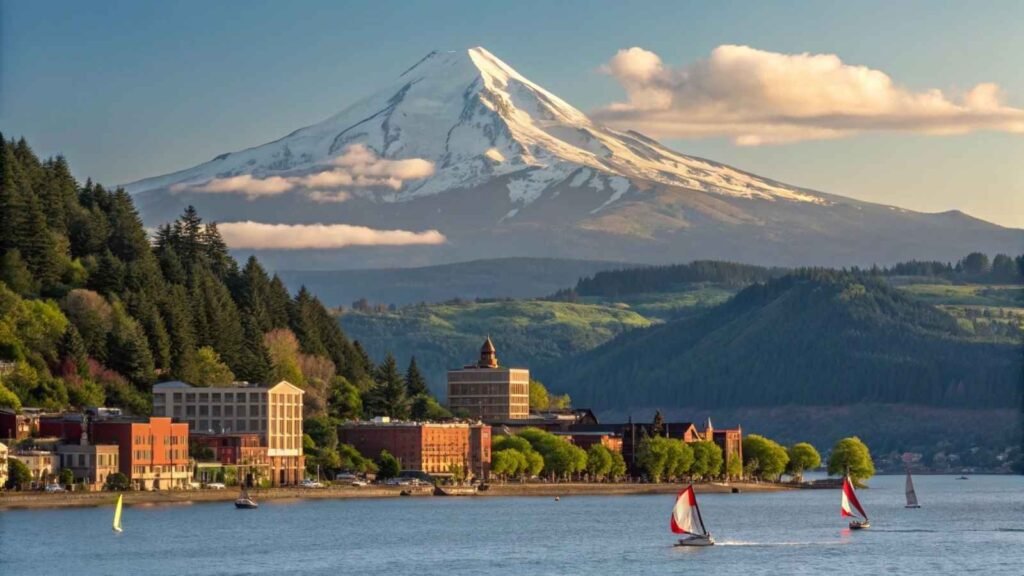
Hood River sits on the Columbia River with dramatic cliffs and winds that turn the area into one of the world’s wind- and kite-sports hubs. The town attracts outdoor athletes and enthusiasts in droves, but it’s also surprisingly sophisticated: local farms and wineries supply excellent restaurants, and downtown is a compact, walkable mix of shops and cafés. The landscape here feels active and agricultural at once, which gives Hood River a lively, rooted character.
The lifestyle skews outdoors-first — windsurfing, kiteboarding, cycling, and hiking are front and center — yet there’s also a strong locavore and craft sensibility: farmers’ markets, cideries, and year-round food culture. Transit to Portland and other cities is doable for weekend escapes, but Hood River often feels like a full stop rather than a bedroom community. It’s a brilliant choice if you want intense outdoor recreation with a surprisingly refined foodie and small-business scene.
I remember watching a sunset over the river while a group packed up from an evening windsurf session — the town felt bustling but not crowded, vibrant but local. If river, wind, and mountain views are your daily backdrop, Hood River is a joyful option.
- Best months to visit: May–September (best for wind sports and cycling).
- Climate: Mild, wet winters; warm, dry summers (Columbia Gorge microclimate).
- Population (approx.): ~8–10k in town; intimate community.
- Nearest major airport: Portland International (PDX) ~1.5 hours.
- Housing note: Popular with second-home buyers and outdoor enthusiasts — competitive near waterfront and hilltop views.
- Top draws: Windsports, cycling, wineries/cideries, Columbia River Gorge access.
- Consider if: You want a small, active town centered on unique water and wind sports.
6. Breckenridge, Colorado
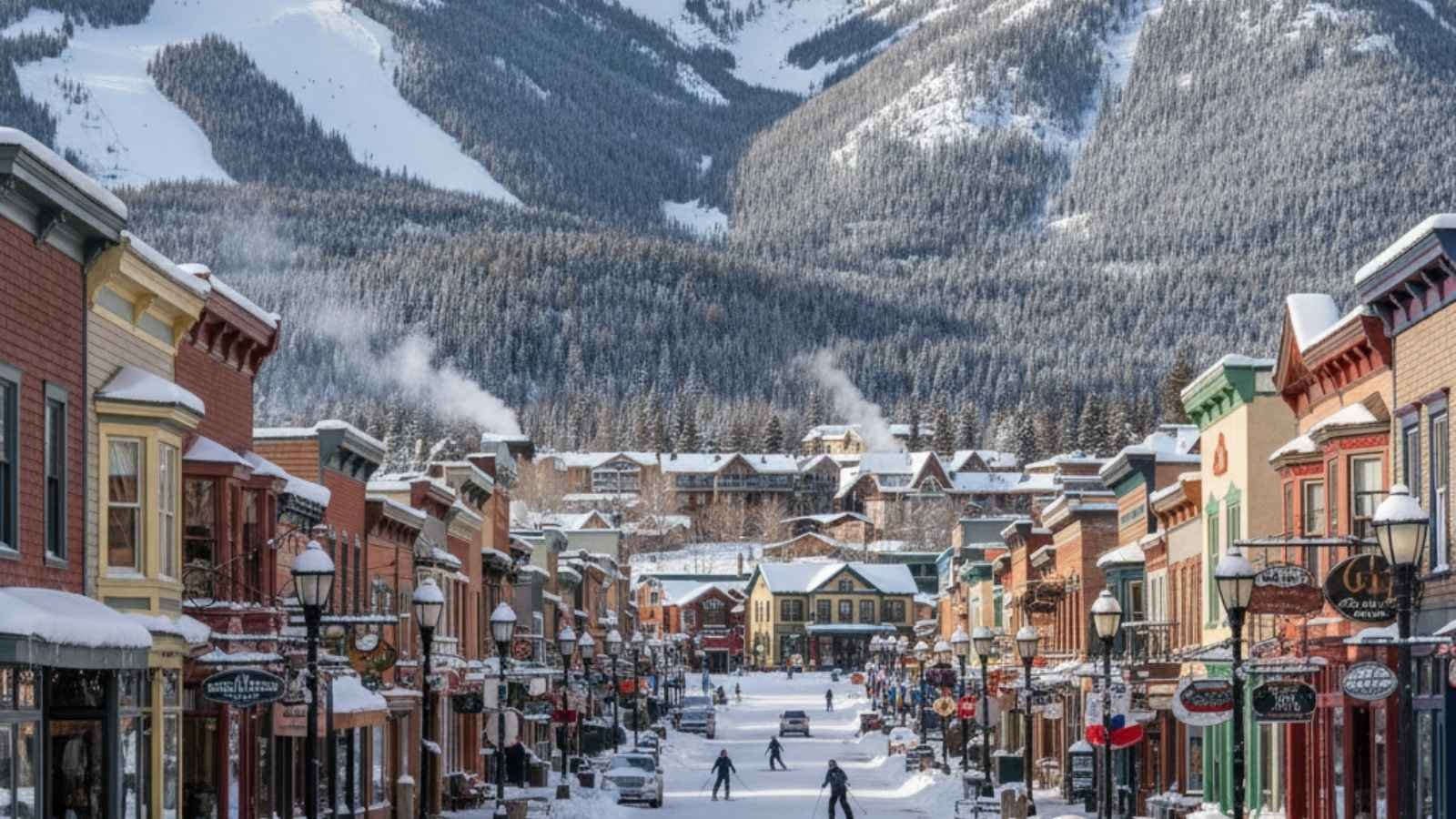
Breckenridge is one of those rare mountain towns that manages to stay lively year-round. In winter, the ski culture takes over — the slopes are world-class and the town hums with an alpine buzz. But when the snow melts, hiking, biking, and outdoor festivals replace the ski boots, giving Breckenridge a balanced, four-season rhythm that few other mountain towns can match.
Despite its small-town layout, it offers urban-level dining and arts options — independent galleries, craft breweries, and a handful of excellent restaurants. What really sets it apart, though, is how easy it is to be active here without feeling like you’re living in a resort bubble. Locals and visitors mix naturally, and there’s a consistent sense of community pride that keeps it grounded.
I once stopped by during shoulder season — half the shops closed early, but everyone at the local bar knew everyone else. That friendliness in between the tourist waves is what makes Breckenridge feel genuinely livable, not just scenic.
- Best months to visit: December–March (ski season) and June–September (summer activities).
- Climate: Alpine — long, snowy winters; mild, dry summers.
- Population (approx.): ~5k residents; much higher in tourist season.
- Nearest major airport: Denver International (DEN) ~2 hours.
- Housing note: High demand; prices reflect its resort popularity.
- Top draws: Skiing, hiking, mountain biking, arts festivals, small-town nightlife.
- Consider if: You thrive in mountain environments and don’t mind seasonal crowds.
7. Sedona, Arizona
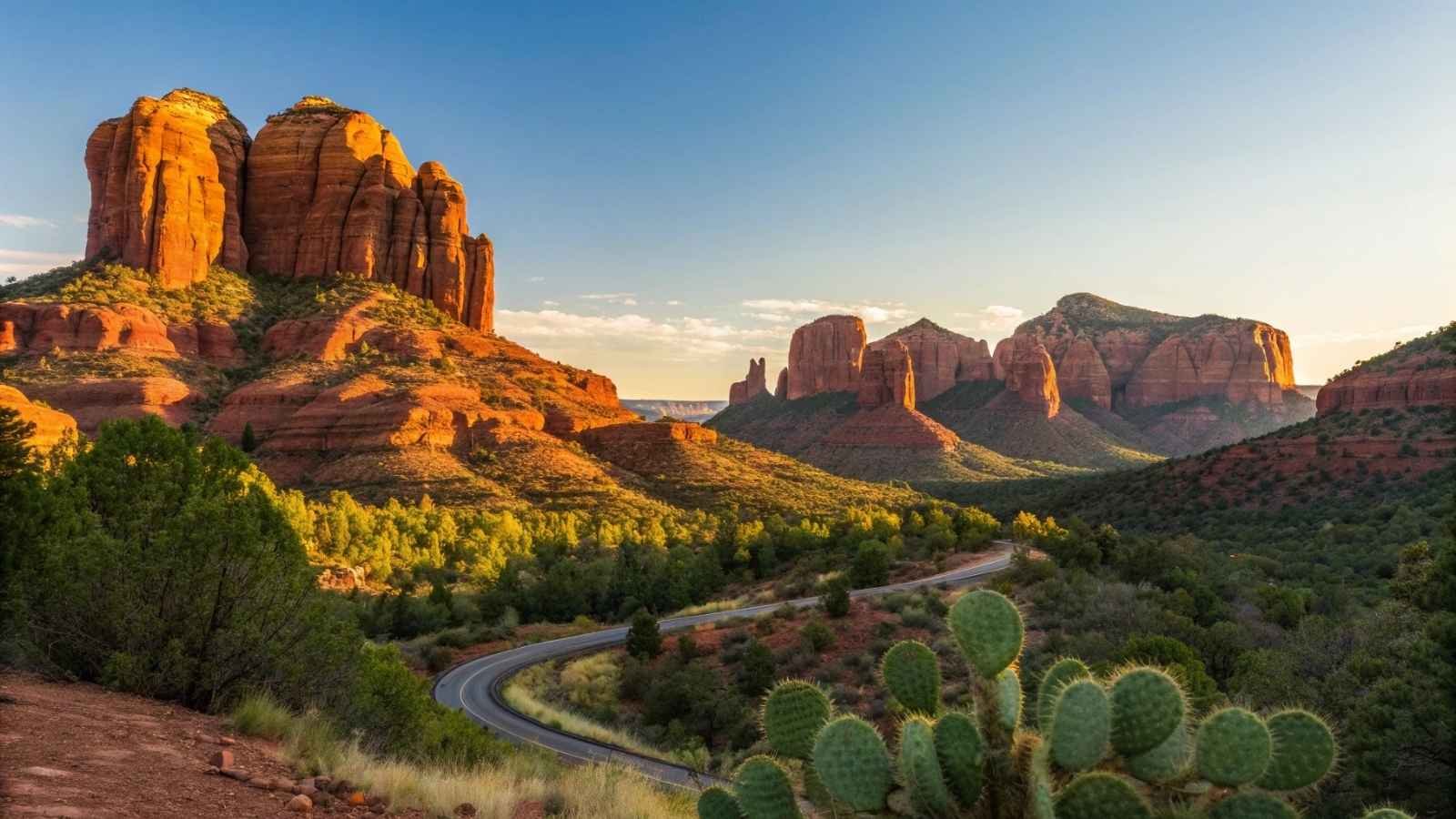
Sedona has a visual drama that’s hard to match — red rock formations glowing at sunset, a dry, pine-scented breeze, and a town that balances spirituality with outdoor adventure. It’s known for its vortexes and wellness retreats, but it’s also a place of raw, natural beauty that makes you want to spend every spare hour outdoors.
The lifestyle is slower here but intentional: mornings on trails, afternoons in local art galleries, and evenings spent watching color wash across the cliffs. The food scene leans healthy and creative, and there’s a growing year-round community of artists, hikers, and remote workers who make Sedona feel more lived-in than touristy.
I remember a conversation with a café owner who said, “Everyone here has a sunrise spot.” That pretty much sums it up — this is a town where people care deeply about how they live each day. Sedona feels like a retreat that somehow works as a home.
- Best months to visit: March–May and September–November (comfortable temps, clear skies).
- Climate: High desert — hot summers, cool nights, mild winters.
- Population (approx.): ~10k residents.
- Nearest major airport: Flagstaff (FLG) ~45 minutes; Phoenix (PHX) ~2 hours.
- Housing note: Prices are high for Arizona due to scenic demand, a mix of permanent and second homes.
- Top draws: Red rocks, hiking, wellness and arts, mild winters.
- Consider if: You want natural beauty, outdoor living, and a calm, introspective pace.
8. Leavenworth, Washington
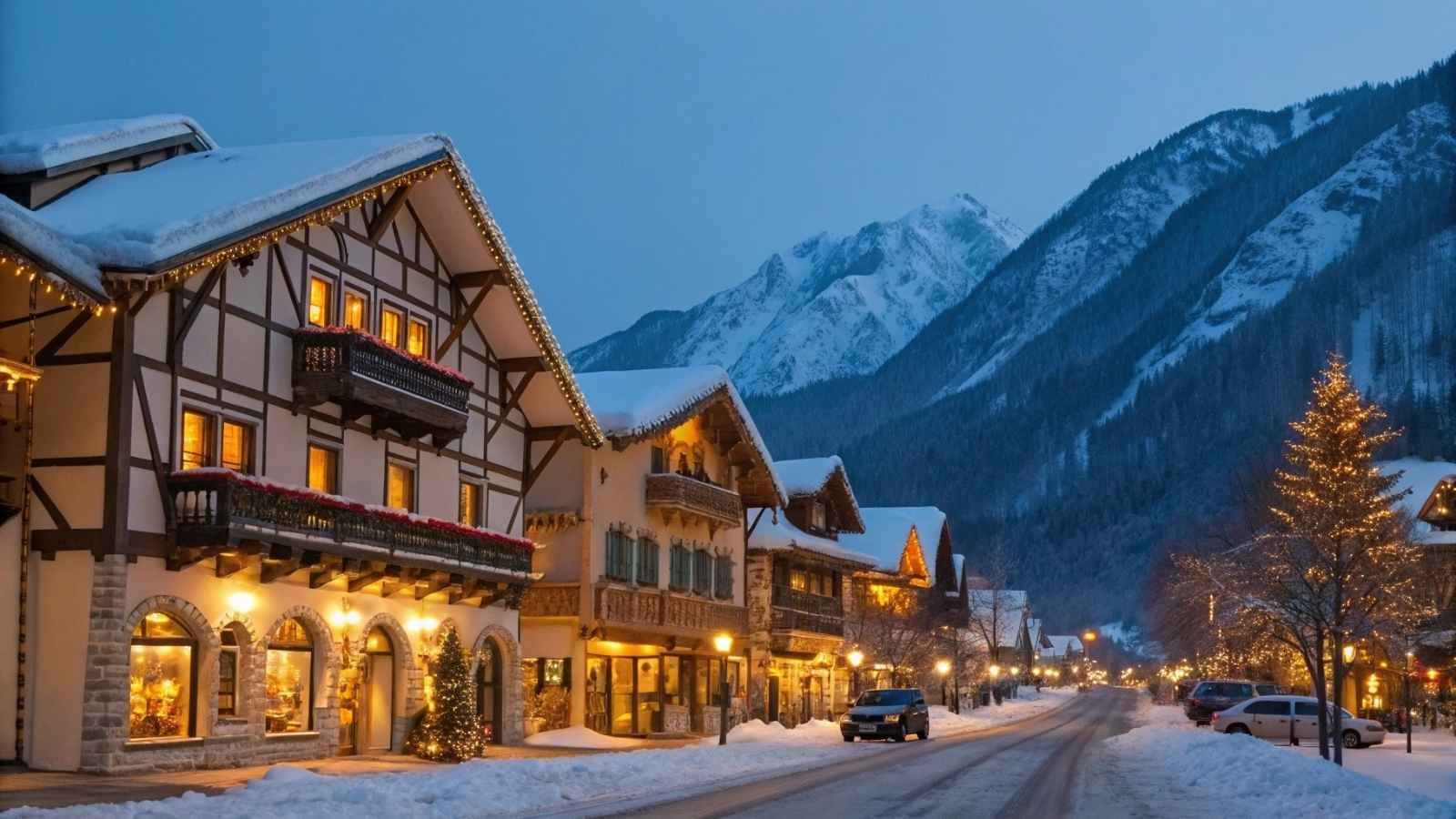
Leavenworth might look like a Bavarian theme park at first glance — half-timbered buildings, alpine façades, pretzels on every corner — but beneath the themed exterior lies a genuinely strong community. Over time, the locals have embraced the charm while keeping the small-town heart alive, and that makes Leavenworth feel both whimsical and grounded.
The surrounding Cascade Mountains offer incredible access to hiking, skiing, and climbing, while the Wenatchee River winds right through town, giving it a strong outdoor core. Despite being a tourist favorite, many residents live full-time here, balancing mountain living with the perks of a cultural mini-hub. It’s where mountain grit meets year-round festivity.
On a weekday morning, you can grab a coffee and hear both tourists and locals chatting about trail conditions — that mix keeps the town lively even outside its festivals. Leavenworth is the kind of small town that makes winter cozy and summer adventurous in equal measure.
- Best months to visit: May–October for hiking and river sports; December for the Christmas festival.
- Climate: Four distinct seasons — warm summers, snowy winters.
- Population (approx.): ~2k residents; draws big seasonal crowds.
- Nearest major airport: Seattle (SEA) ~2.5 hours.
- Housing note: Prices moderate but are climbing; limited inventory.
- Top draws: Bavarian village vibe, outdoor recreation, river access, festivals.
- Consider if: You love mountain living and don’t mind tourism as part of the local rhythm.
9. Taos, New Mexico
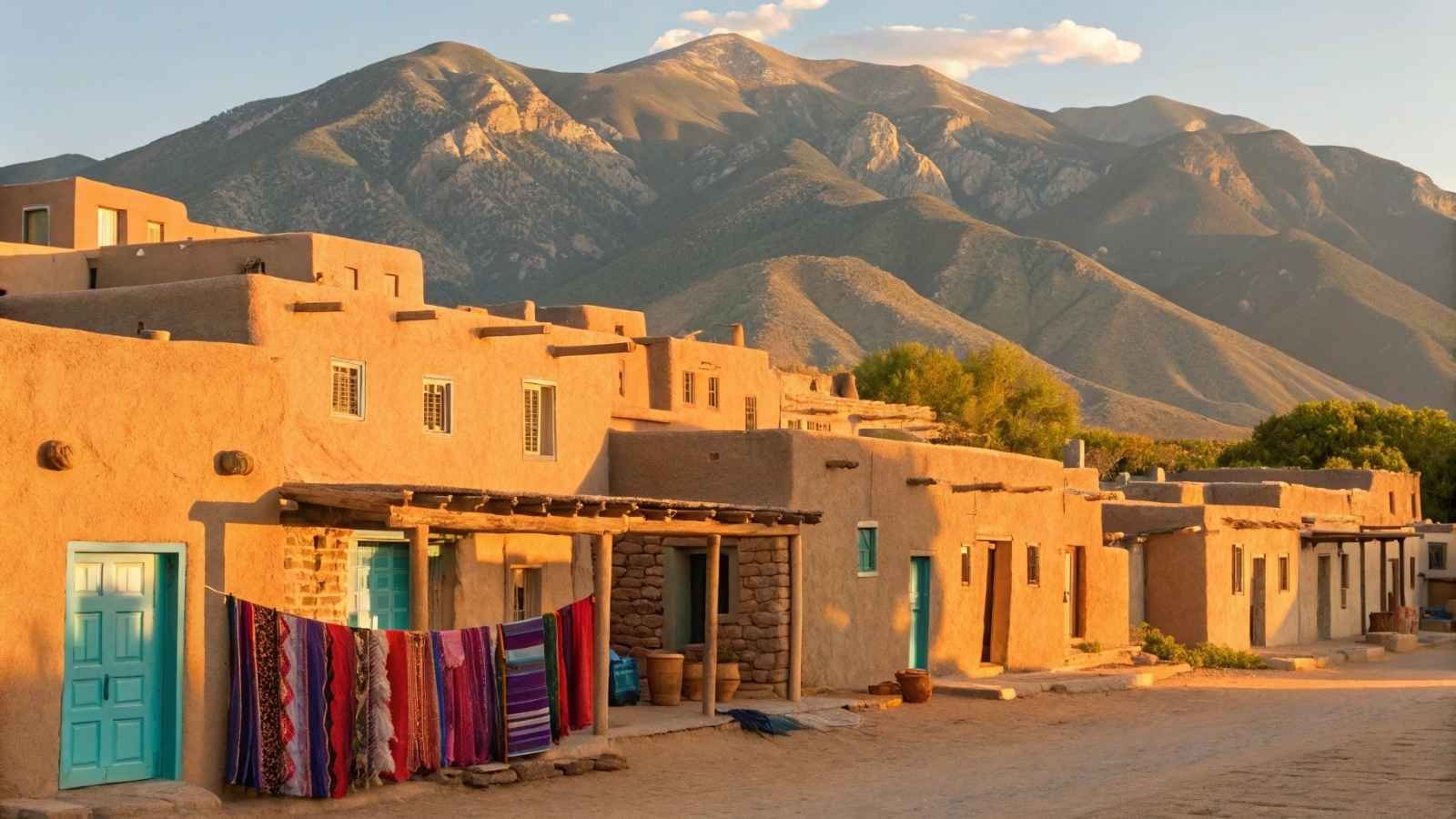
Taos has that art-meets-desert-mystique energy that’s hard to replicate anywhere else. It’s steeped in Native American, Spanish, and creative heritage, giving it a cultural richness that feels far deeper than its population size. The light here has inspired artists for generations, and the surrounding landscape — desert plains framed by snow-capped peaks — adds an almost spiritual backdrop to daily life.
This is not a place that rushes. The rhythm is slower, conversations longer, and creativity seems to be part of the oxygen. If you’re drawn to handmade, soulful, slightly off-grid living, Taos speaks that language fluently. There’s a thriving arts scene, good local food, and a real sense of place that hasn’t been sterilized by overdevelopment.
Once, sitting outside a pottery shop, I watched a thunderstorm roll across the mesa while an artist kept quietly working inside — no urgency, just presence. That’s Taos: patient, atmospheric, and deeply rooted in both art and nature.
- Best months to visit: March–May and September–October (pleasant temperatures).
- Climate: High desert — sunny days, cool nights, low humidity.
- Population (approx.): ~6k in town; broader area includes rural communities.
- Nearest major airport: Albuquerque (ABQ) ~2.5 hours.
- Housing note: Varied; mix of adobe homes and artist retreats, moderate prices.
- Top draws: Art scene, adobe architecture, hiking, and cultural heritage.
- Consider if: You value creative solitude and layered local culture.
10. Franklin, Tennessee
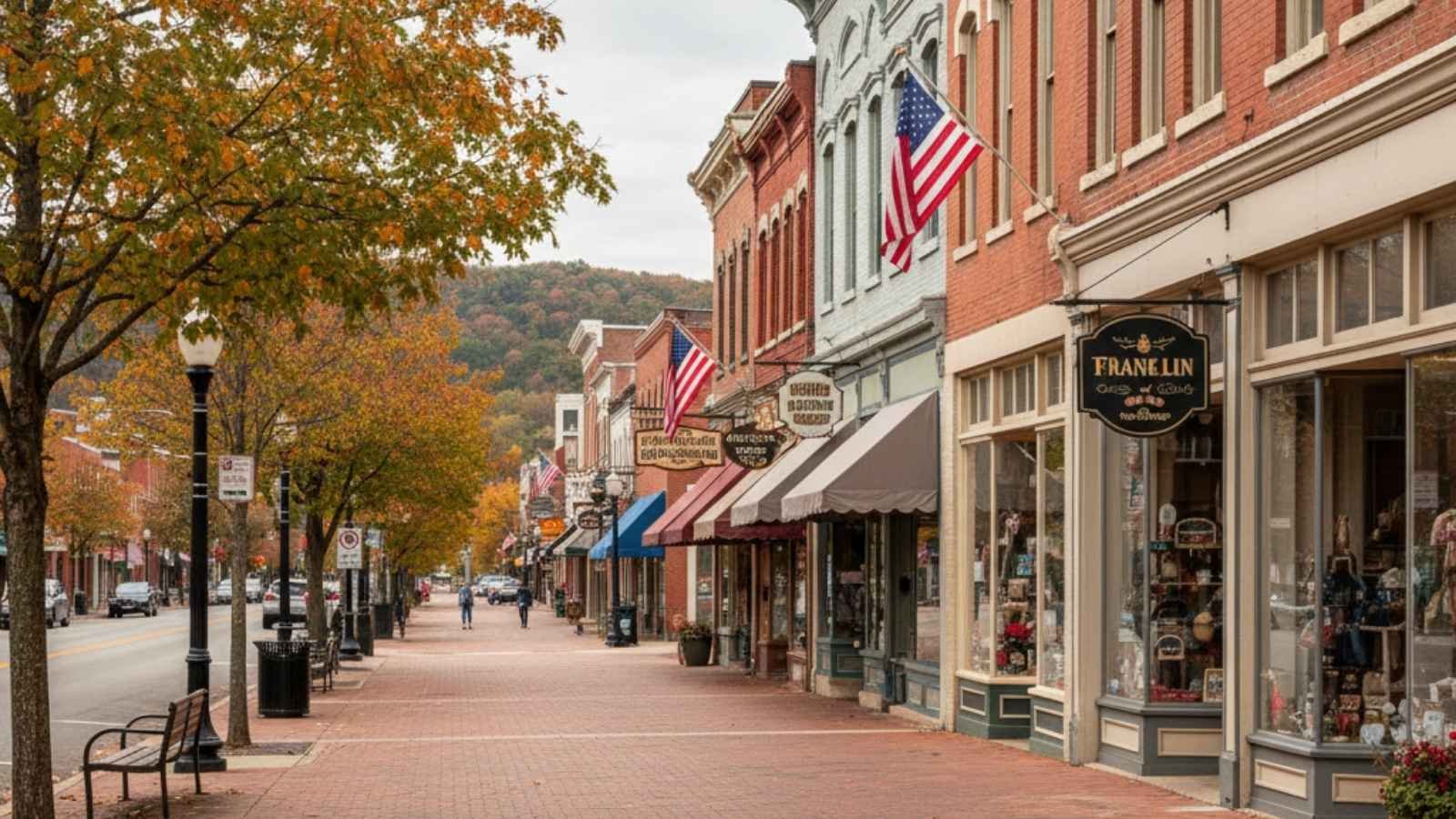
Franklin feels like a perfectly tuned mix of Southern charm and modern livability. Just south of Nashville, it has a historic downtown lined with boutiques, live music, and restaurants that feel authentic, not curated. You’ll find Civil War history alongside a growing creative and tech population that’s helping Franklin evolve beyond its past while keeping its character intact.
Life here moves at a steady pace — not sleepy, but never rushed. There’s a strong sense of community pride: festivals, farmers’ markets, and neighborhood gatherings are a big part of the social fabric. It’s also close enough to Nashville for work or culture but far enough to stay peaceful at night.
I remember walking downtown during a fall street festival — the mix of music, barbecue smoke, and easy conversation captured everything small-town Tennessee does right. Franklin has soul, history, and enough modern polish to feel like a place you could settle into quickly.
- Best months to visit: April–June and September–November (comfortable temps, events season).
- Climate: Humid subtropical — warm summers, mild winters.
- Population (approx.): ~85k (larger small town/suburban blend).
- Nearest major airport: Nashville International (BNA) ~30–40 minutes.
- Housing note: Higher-end suburban market; growing quickly.
- Top draws: Historic charm, live music, walkable downtown, proximity to Nashville.
- Consider if: You want Southern warmth with urban access and a strong local community.
11. Marfa, Texas
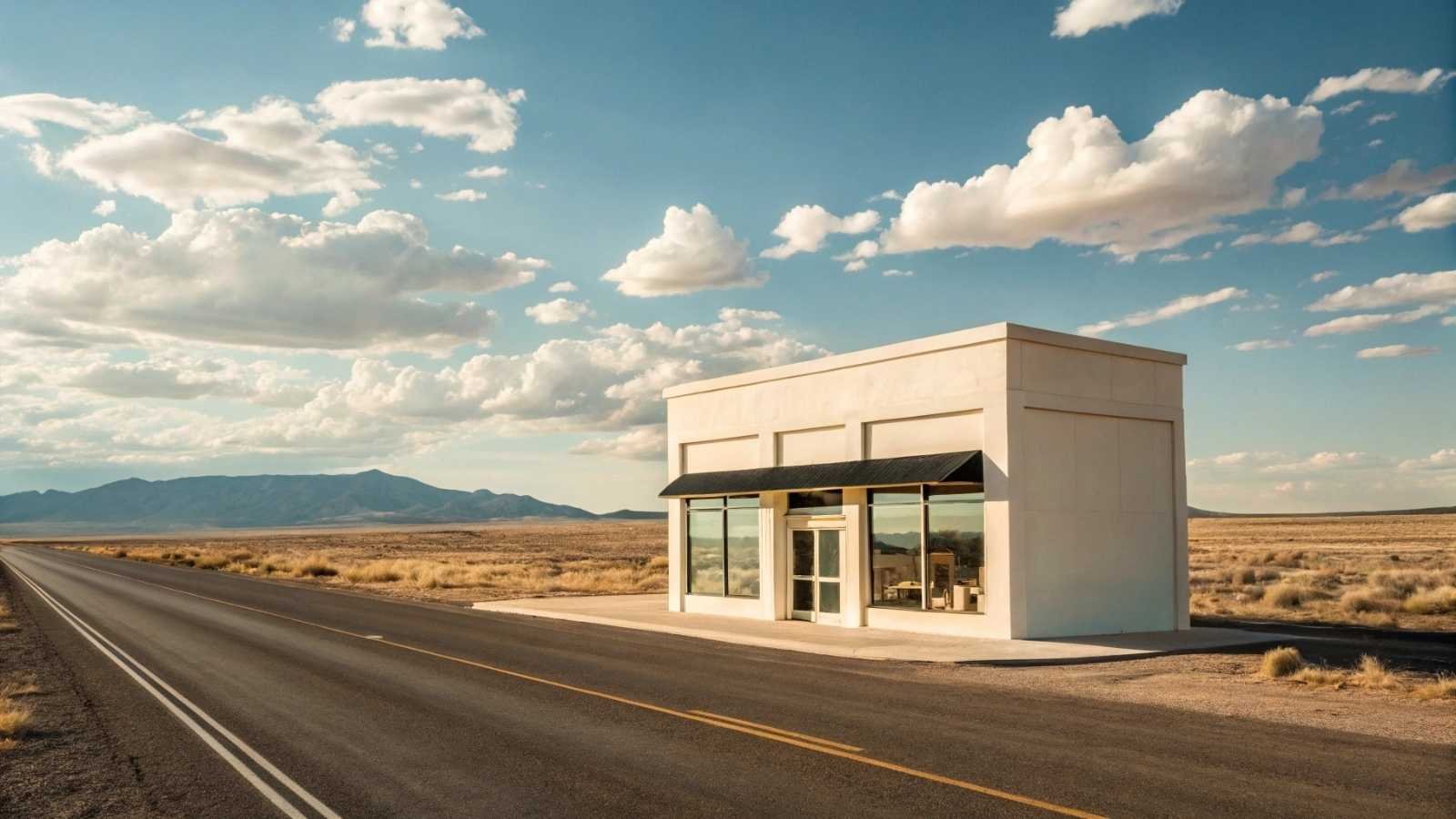
There’s nowhere quite like Marfa. Out in the high desert of West Texas, this tiny town feels like it shouldn’t exist — a surreal blend of minimalist art, desert quiet, and star-studded skies. What began as a railroad stop is now a creative outpost with international cred, where cutting-edge galleries sit beside century-old adobe houses.
Days here tend to slow down. The desert sun demands it. People come for the art — Donald Judd’s installations, the Chinati Foundation — but often stay for the stillness and that strange, cinematic light that has inspired countless photographers and filmmakers. Despite its fame, Marfa has kept its authenticity: dusty streets, vintage neon, and a sense that time moves differently here.
I spent one night watching the Marfa Lights — those unexplained orbs that flicker on the horizon — and it felt like the desert itself was performing. That’s Marfa in essence: part art experiment, part small-town mystery, all heart.
- Best months to visit: March–May and September–November (cooler desert weather).
- Climate: High desert — hot days, cool nights, dry air.
- Population (approx.): ~1,800 residents.
- Nearest major airport: El Paso (ELP) ~3 hours.
- Housing note: Limited availability; a mix of restored adobes and minimalist new builds.
- Top draws: Contemporary art scene, desert landscape, stargazing, Marfa Lights.
- Consider if: You crave solitude, creativity, and a touch of the surreal.
12. Traverse City, Michigan
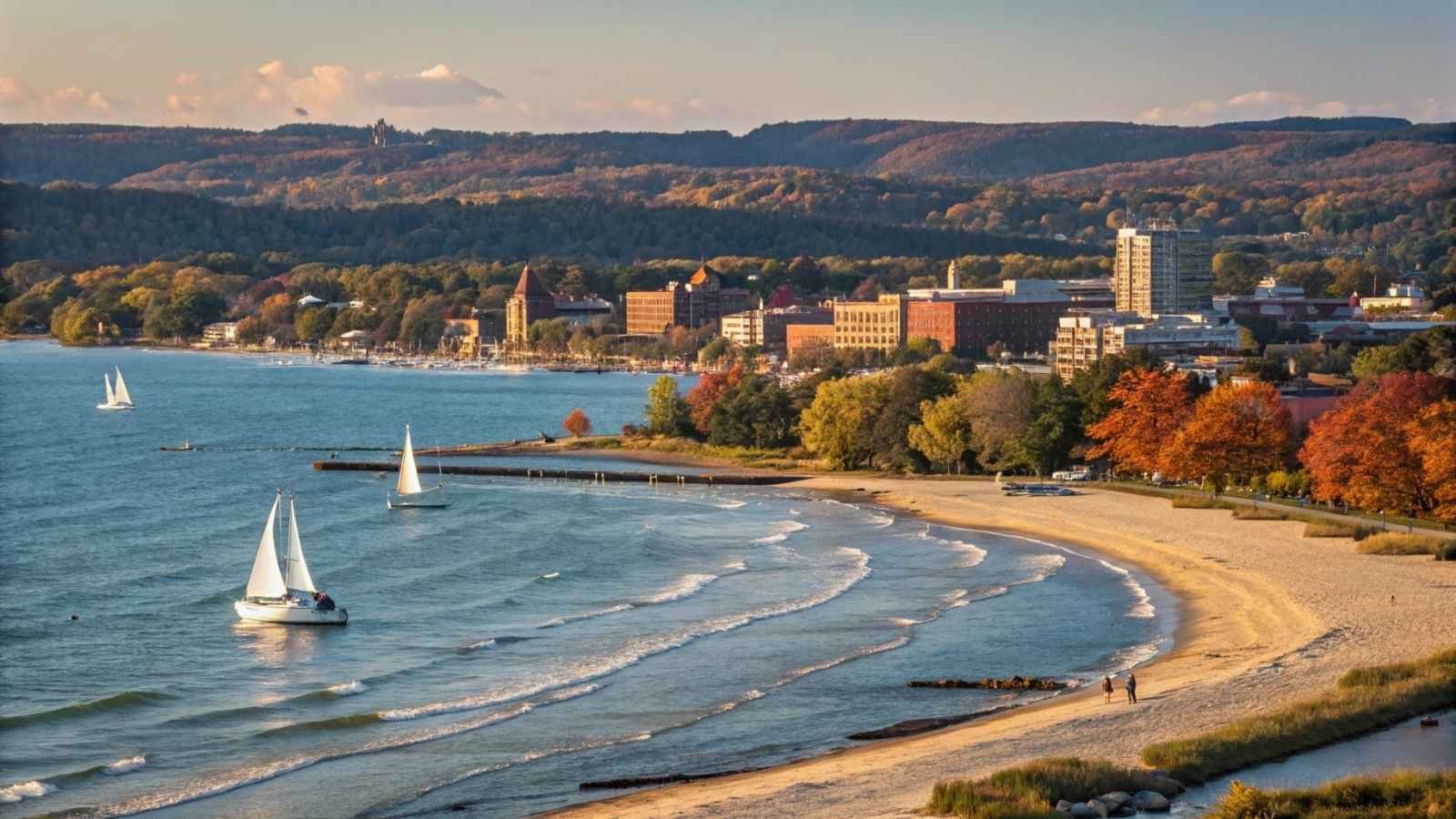
Traverse City is that rare northern town that hums with life year-round. Sitting on the shores of Lake Michigan’s Grand Traverse Bay, it offers a mix of lakeside calm, thriving food culture, and small-town friendliness. In summer, it’s all beach days, farmers’ markets, and sailboats; in winter, the quiet sets in beautifully, giving locals a cozy, hometown feel.
It’s big enough to have a strong economy — wineries, tech startups, tourism — but small enough that you’ll still bump into familiar faces at the coffee shop. The surrounding area is stunning: dunes, forests, and freshwater beaches that rival ocean coastlines in beauty. Traverse City somehow makes the Midwest feel like a hidden coastal escape.
One memory that sticks: a sunset over the bay that painted the water copper — locals just sat on the pier, no phones out, just watching. That’s the pace of life here — easy, sincere, and deeply tied to nature.
- Best months to visit: June–September (perfect for beach weather and wineries).
- Climate: Four seasons — warm summers, snowy winters, crisp autumns.
- Population (approx.): ~16k in city; larger regional community.
- Nearest major airport: Cherry Capital (TVC) — right in town.
- Housing note: Moderate; some waterfront properties are premium.
- Top draws: Lake Michigan beaches, wine country, local food scene, fall colors.
- Consider if: You love small-town lakeside living with real seasonal contrast.
13. Bar Harbor, Maine
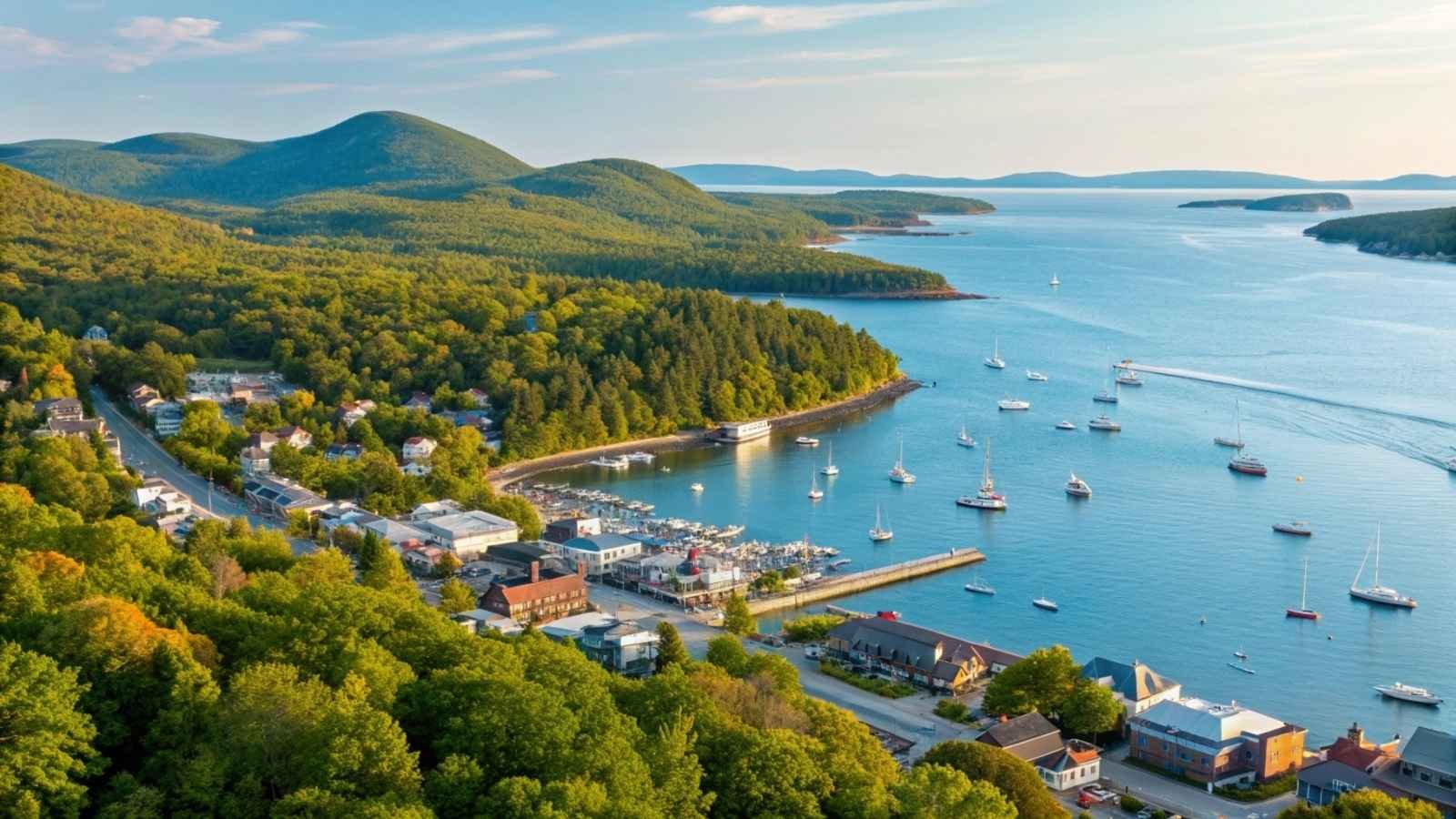
Bar Harbor is one of those places where nature and town life intertwine perfectly. Perched at the edge of Acadia National Park, it feels both wild and walkable — a place where you can hike a mountain before breakfast and have fresh lobster by noon. The coastal views here are so striking that they almost feel like another character in the story of daily life.
What keeps Bar Harbor grounded is its balance: summer crowds come and go, but the off-season reveals a community of locals who genuinely love where they live. The art galleries, historic inns, and harbor docks all have that worn-in authenticity that makes New England coastal towns timeless.
Once, walking along the Shore Path at sunrise, I passed more locals than tourists — quiet nods, coffee cups in hand, the scent of salt and pine in the air. That mix of natural drama and unpretentious rhythm makes Bar Harbor endlessly livable.
- Best months to visit: June–October (ideal weather and open park facilities).
- Climate: Cool coastal — chilly winters, mild summers.
- Population (approx.): ~5k residents.
- Nearest major airport: Bangor (BGR) ~1 hour.
- Housing note: High summer demand; quieter and more affordable off-season.
- Top draws: Acadia National Park, seafood, coastal hiking, classic New England charm.
- Consider if: You love maritime life, nature at your doorstep, and cooler climates.
14. Galena, Illinois
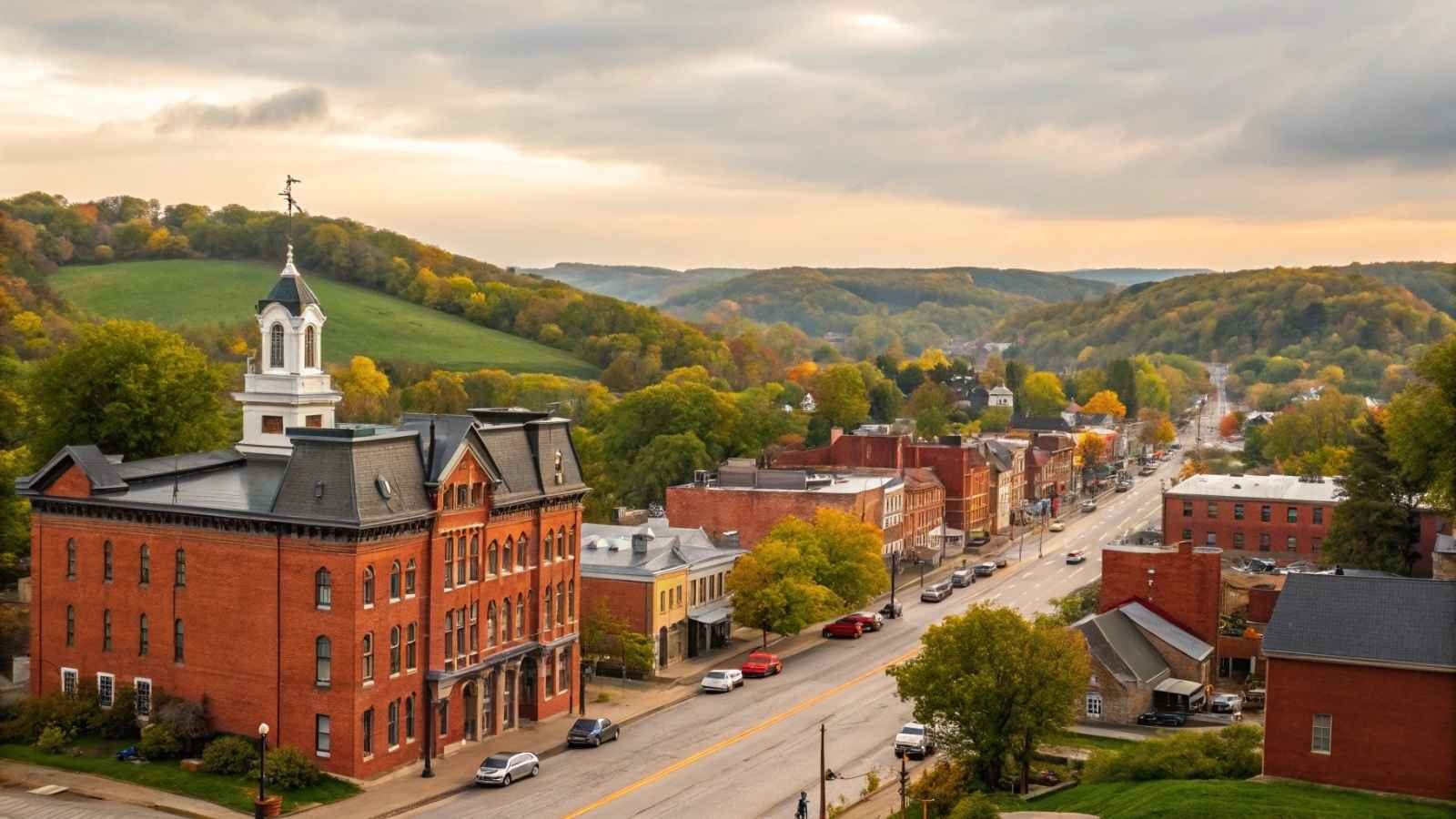
Galena is a Midwest gem that feels frozen in the best possible way — 19th-century architecture, cobblestone streets, and a postcard-perfect downtown that somehow avoided over-modernization. The historic preservation here is remarkable; most buildings look much as they did 150 years ago, yet the town buzzes with boutiques, cozy inns, and local eateries.
It’s not flashy or fast-paced, and that’s its appeal. Galena is the kind of place where you wander, browse, linger. There’s a genuine warmth to the shopkeepers and residents, and the community’s pride shows in how pristine everything stays. Add in rolling hills and the nearby Mississippi River, and you get an unexpectedly scenic setting for inland Illinois.
I remember chatting with a local baker who said, “We may be small, but we keep people coming back.” She’s right — Galena’s mix of history and hospitality makes it hard not to.
- Best months to visit: April–October (warm weather and outdoor events).
- Climate: Four distinct seasons — snowy winters, humid summers.
- Population (approx.): ~3k residents.
- Nearest major airport: Dubuque Regional (DBQ) ~30 minutes.
- Housing note: Affordable compared to larger cities; strong tourism rental market.
- Top draws: Historic downtown, B&Bs, scenic drives, antique shopping.
- Consider if: You appreciate small-town nostalgia with gentle hills and friendly neighbors.
15. Bisbee, Arizona
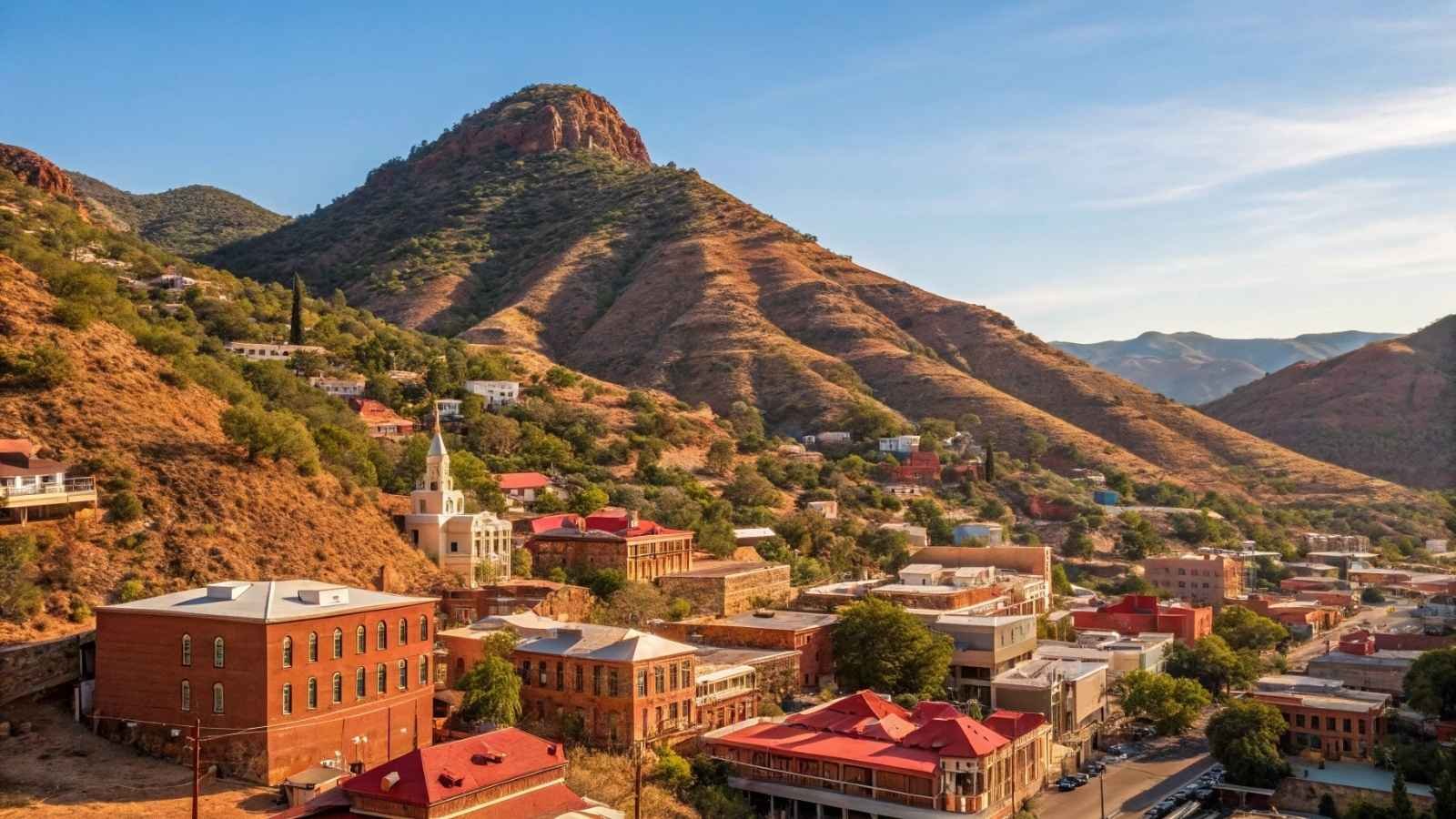
Bisbee feels like stepping into a bohemian canyon village — quirky, colorful, and carved right into the Mule Mountains. Once a copper-mining town, it’s now home to artists, musicians, and free spirits who’ve turned old miners’ cottages into funky homes and galleries. The steep hills, narrow streets, and murals everywhere give it a lived-in charm that’s delightfully offbeat.
There’s a slightly rebellious streak here: vintage shops, oddball cafés, and locals who prefer conversation over convention. Yet it’s also welcoming, diverse, and unpretentious. Life in Bisbee moves to its own rhythm, with community events that are as spontaneous as they are spirited.
On my last visit, a jazz trio played outside an antique store while locals danced barefoot on the sidewalk — no schedule, no formality, just Bisbee being Bisbee. It’s a town for those who like their small-town life with personality and a touch of desert eccentricity.
- Best months to visit: March–May and September–November (pleasant weather).
- Climate: High desert — mild winters, warm summers.
- Population (approx.): ~5k residents.
- Nearest major airport: Tucson (TUS) ~1.5 hours.
- Housing note: Affordable, eclectic housing stock; artistic community vibe.
- Top draws: Art scene, historic mining heritage, colorful architecture, and local festivals.
- Consider if: You value individuality, creativity, and a desert setting with mild weather.
16. Eureka Springs, Arkansas
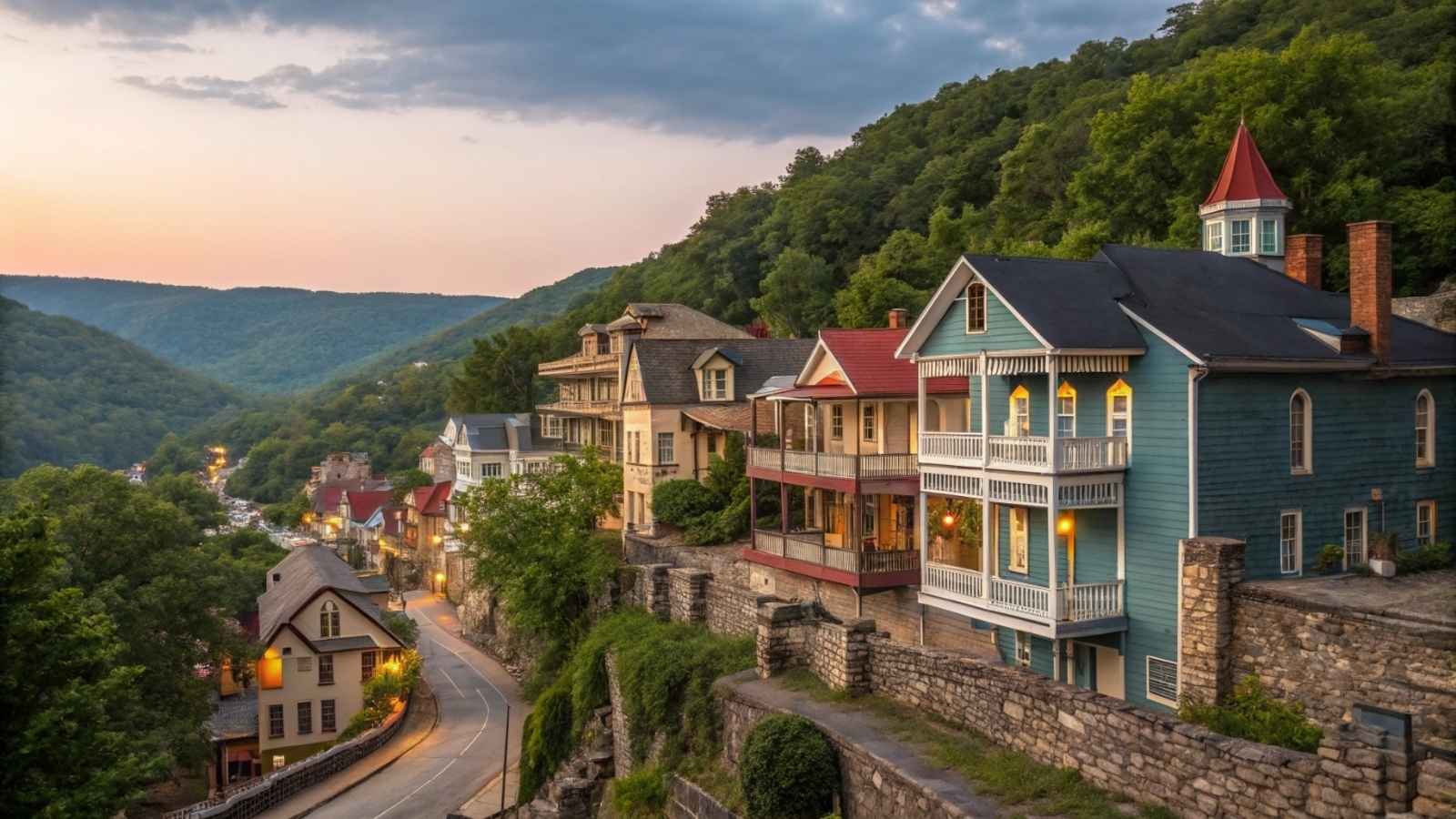
Eureka Springs feels like a secret garden built into the Ozarks — a steep, twisting little town of Victorian homes, springs, and stairways that seem to lead in every direction. The whole place feels whimsical, like a set from another era, yet it’s very much alive with art, music, and community events.
There’s an openness here that’s rare in small towns: artists, retirees, musicians, and spiritual seekers all coexist comfortably. It’s both laid-back and deeply creative — a place that welcomes you as you are. And the surrounding forested hills make daily life feel like it’s perpetually wrapped in green.
One night, I stayed in a century-old inn where the porch lights glowed over winding stone streets. The next morning, the town was misty and quiet — old-world and timeless. Eureka Springs is one of those towns that doesn’t just look beautiful — it feels enchanted.
- Best months to visit: April–June and September–November (comfortable temps and festivals).
- Climate: Temperate — humid summers, mild winters.
- Population (approx.): ~2k residents.
- Nearest major airport: Northwest Arkansas National (XNA) ~1.5 hours.
- Housing note: Affordable by national standards; plenty of historic homes.
- Top draws: Victorian architecture, art galleries, springs, quirky local culture.
- Consider if: You love creativity, community, and the feel of a storybook mountain town.


